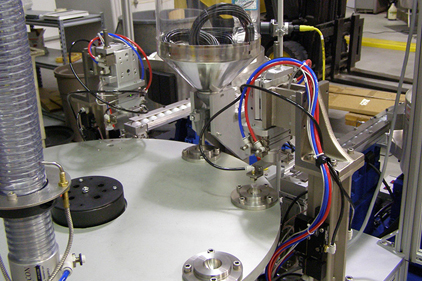Mick Jagger of the Rolling Stones famously sang:
You can’t always get what you want
But if you try sometimes,
You just might find
You get what you need
While I doubt Mr. Jagger had anything remotely near assembly automation in mind when he wrote those lyrics, they apply surprisingly well. In my 15 years of designing and building custom automation, I have found that manufacturers often focus on solving the problem at hand, rather than looking at the root cause of the issue. It is human nature to want to solve what appears to be the immediate issue. However, it makes little sense to frantically mop up a flooded house while the faucet remains wide open. In the end, it’s a losing and costly proposition.
A good example of this type of thinking is to draw arbitrary lines between the various stages of a manufacturing process. By focusing on individual processes, engineers lose control of the orientation of a part from one stage to the next.
I recall a manufacturer who called us in to help automate several steps in its process. The manufacturing engineer showed me an assembly operation where the operator picked a complex-shaped part out of a box. The operator then spent several seconds flipping the part over in her hands to determine the correct orientation before placing it into an assembly fixture.
When I inquired why it took so long, the engineer explained that the part was “almost, but not quite symmetrical,” and it was difficult to determine the proper orientation. The engineer had even investigated orientating the part by vibratory feeder bowl, but found that it was expensive and not 100 percent reliable. The engineer wanted a vision system that would tell the operator if the part was oriented correctly. This was imaginative and technically possible. But, it was what the engineer wanted. It wasn’t necessarily what he needed.
I asked to see the process just prior to the assembly operation. The engineer protested, stating that was not the issue. I persisted and eventually was led to an injection molding machine where the parts were being made and then ejected randomly into a bucket. This was the root cause. The molding machine obviously controls the orientation of the parts. Once we have control of orientation, we never want to let it go. In the end, we proposed to pull the parts out of the molding machine and place them into trays, so the orientation was controlled and repeatable. This eliminated the need for operators to orient the parts and reduced a 15-second cycle time on the downstream machine to 6 seconds.
Despite the popularity of Six Sigma, kaizen events and lean manufacturing, I still see a distinct lack of root-cause analysis being performed in manufacturing. The fast-paced, demanding schedule of product development and deployment often blinds us to the real source of problems in our assembly plants. However, taking a step back to determine “what we need” rather than “what we want” can make a big difference in producing an efficient, economical and satisfactory automation solution.
Do you agree? Have you ever been blind to the root cause of a manufacturing problem? Did you ever get what you needed rather than what you wanted? Or vice versa? How would you have solved the customer’s problem? Share your thoughts!
Sean Dotson, PE, is the president and co-founder of RND Automation & Engineering, a manufacturer of custom industrial automation and robotic assembly machinery in Sarasota, FL. Visit www.rndautomation.com for more information.

Recent Comments
Helpful for Trainees
Cable Assembly Manufacturers
Huawei for manufacturing?
should have a scanner and then 3D print the repair
IPC-A-610 and IPC-j-std-001